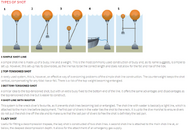Marty Kolenut
Registered
Look up an an anchor lifting ball. That ring is full proof, just deploy with an smb attached. Release at top of chain. Can be recovered when you pull in anchor. Really simple Actually. Can’t see how people are going to get tangled in it or cause a problem.
How do you initially get down to the wreck? The shot line (first thing thrown in when we are passing over the wreck) serves the first divers (the guy who's going to tie in) guide down to the wreck.
The ring is NOT fool proof. Read my posts. If you already have, then read them again. You are talking about something you have never tried, thats obvious. And the way you just described is by attaching an SMB won't work at all.
"Can’t see how people are going to get tangled in it or cause a problem"
Because you haven't done it.





